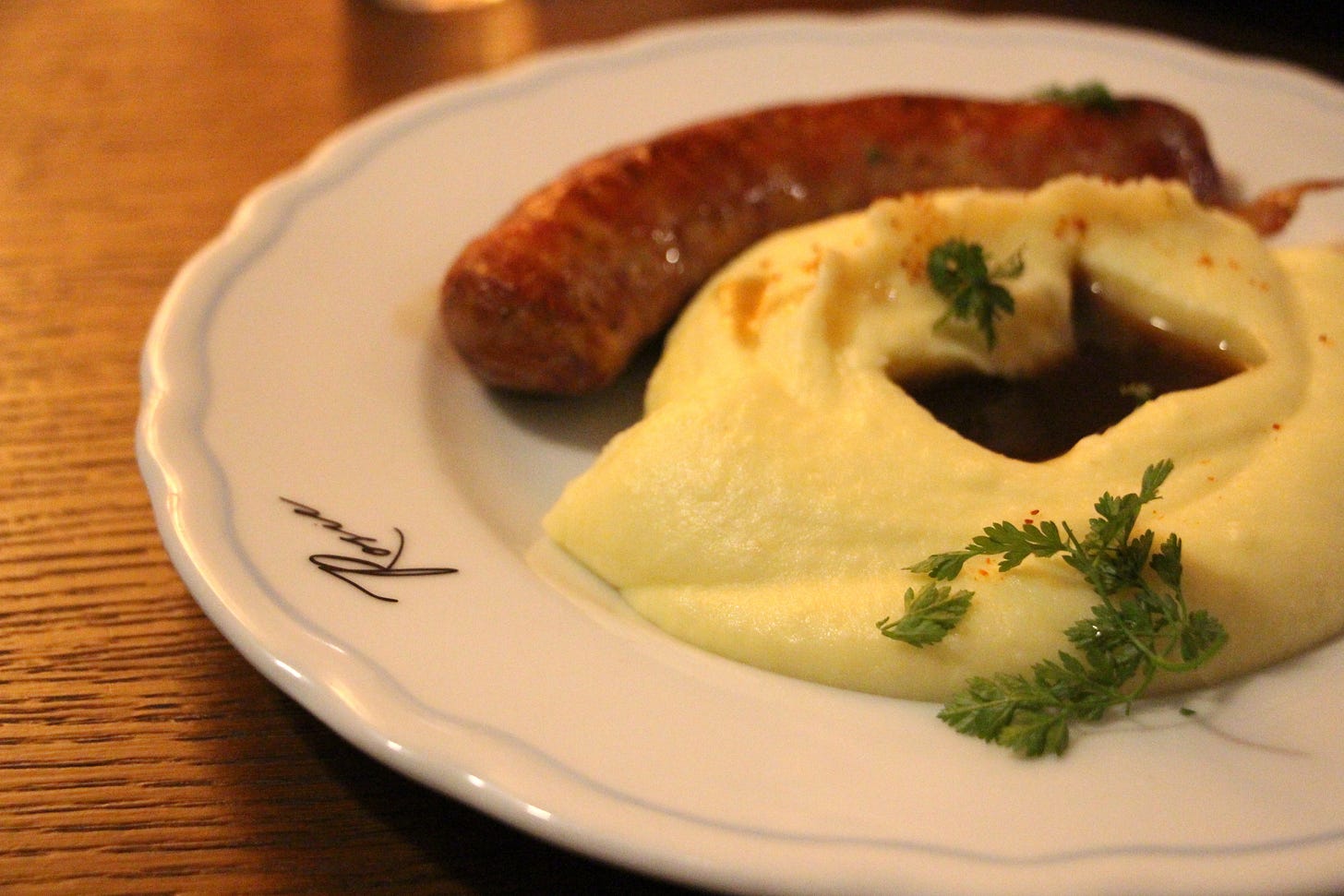Emily in France 🇫🇷 Food in Translation

Lost in Translation
On one of my first trips to France, a backpacking adventure with some of my closest friends, I mused that a good job for me would be to be a culinary translator. It was a job that, in my imagination, would involve me going to restaurants offering a tourist menu, eating for free, and then correcting the audacity they had to call chicken with a jus "chicken in her sauce" or carottes râpées "raped carrots."
(I later became an actual culinary translator. I did not eat for free and spent most of my time trying to figure out how different languages categorize different types of fish, and why the French are so obsessed with describing the textures of things on-menu.)
Translation in general is tough – and is not something that you necessarily know how to do well (or at all) by virtue of being bilingual. But culinary translation, as I explored in Atlas Obscura some years ago, is a breed of its own. Food, like many things, is context dependent, culture dependent. But something like a menu is also, by design, terse. It requires the diner to fill in even more blanks. And it makes a lot of assumptions about what the reader already knows.
As the world of food proceed through long overdue decentralization – and, particularly, the divesting of fine dining from the French model that has long defined it – different cuisines and cultures are emerging as more mainstream, popular, and familiar than ever before. With them, of course, come new words from other languages. I found this exploration of how foreign language characters feature in cookbooks extremely compelling, and it made me think even more deeply about how and why we choose to translate or retain a source word, as the case may be, in culinary translations. From phở to bao, panino to crème brûlée, the way in which words are absorbed – or not – into the target language is an interesting thing to ponder... especially while digging in.

What I'm Eating
I'm currently assembling a list of my favorite bistros in Paris (more soon!) and despite boasting the kind of social media presence that usually makes me raise an eyebrow, Brasserie Rosie is well worth the hype. More on the blog.
Discover more of my foodie finds via Instagram @emily_in_france.
Where I'm Going
Now that we're deconfined here in Paris, it seems high time I bring this section back! Here's where I'm headed in Paris and beyond this week. For more ideas, tune into Don't Miss This, a podcast hosted by the incomparable Jennifer Geraghty, producer extraordinaire of Paris Underground Radio.
1. To the zero carbon dinner at Nosso, where Chef Alessandra Montagne-Gomes will be serving up a plant-driven meal made of local ingredients.
2. To Atelier des Lumières, to bask in the Surrealist, immersive experience of the works of Salvador Dalí projected on the walls of a former warehouse.
3. To the American Library in Paris for new stack of books – still attempting to read a few more of my 12 classics of the year (so far I've read, uh, four) in the next two and a half months. Up next (at long last...): Little Women!
What I'm Writing
1. Starbucks coffee is, to me, like Paul bakeries: good in a pinch and, if not phenomenal, at least consistent. I ranked the ground coffees from this coffee superchain for Mashed.
2. Fellow beet lovers, you've got to try this recipe from Chicago's Chef Erick Williams. According to the chef, it's converted many a former beet hater! For Inside Hook.
3. During that oh-so-short pawpaw season, here are the top places in DC to feast on North America's largest native fruit. For Inside Hook.

What I'm Saying
1. On Navigating the French, this week's word encapsulates a combination of wandering, people-watching, and embracing the unexpected. Join me and Federico Castigliano, a professor of French and Italian in Beijing and author of Flâneur: The art of wandering the streets of Paris, in chatting about flânerie.
2. On Chez Toi, Caroline Conner and I pair your home-cooked recipes with the perfect wine and most complementary cheese. This week's recipe – or recipes! – come from Camilla Furman. Rich foie gras-stuffed deviled eggs and a creamy Provençal millefeuille with duck require precision-driven pairings to keep toppling their balance. I opt for a simple, herbaceous cheese, while Caroline looks west for a Burgundian wine that rises to the challenge.
(And if you want your recipe featured in a future episode, shoot me an email! We're always up for a challenge.)

What I'm Reading
1. Don't be wary of the length of this 500+-page tome. Pachinko is at once an ultra-readable and phenomenally heartbreaking multigenerational epic spanning the 20th century in colonized Korea and Japan. More on the blog.
2. I’m pretty sure everyone has read the story about the bad writer friend, which my writing group shared to our WhatsApp group within moments, pledging to never take advantage of one another’s kidney donations. In the New York Times.
3. How close to carbonara does it have to be if you want to call it carbonara? Sara Jenkins investigates for Taste.
A bientôt !



